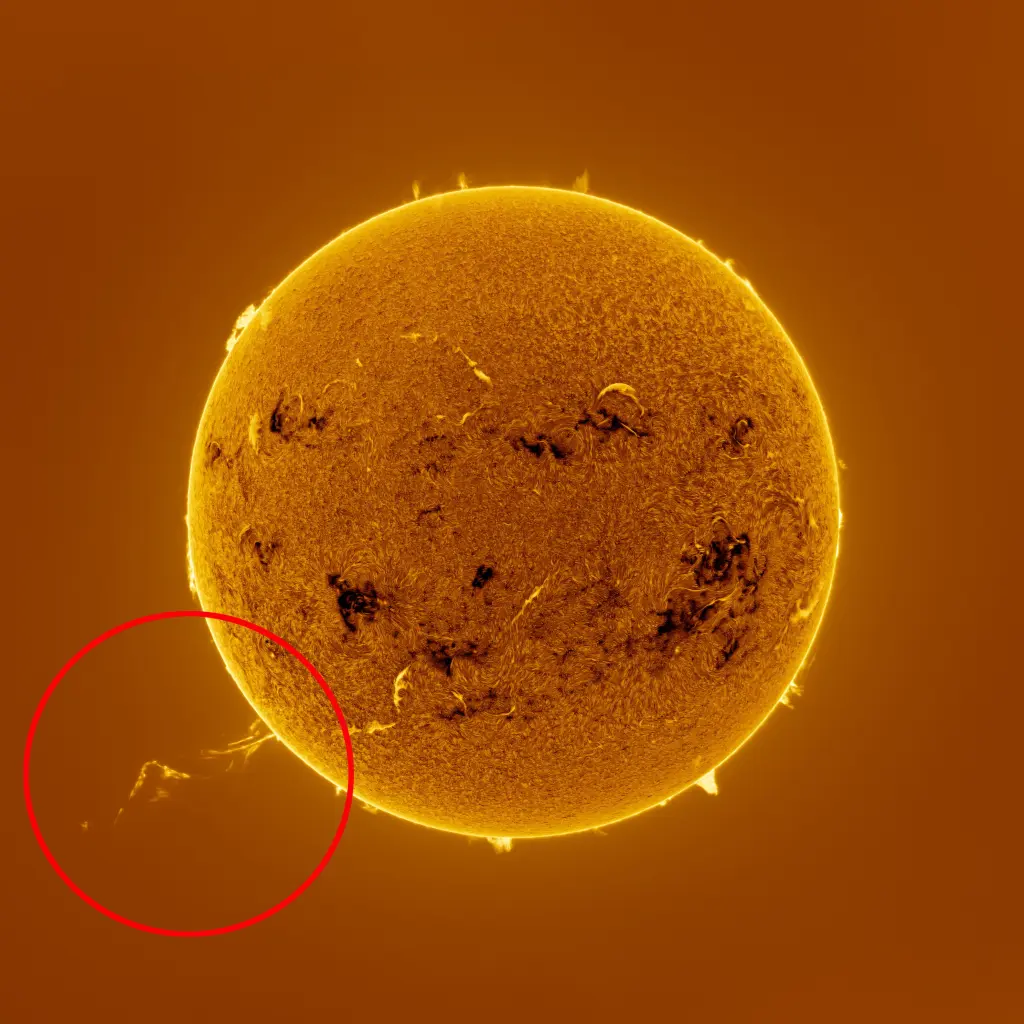Argentine astrophotographer Eduardo Schaberger Poupeau has published a stunning image. It shows a giant plasma ejection on the Sun.

The image was taken on July 17. Poupeau used the dual 60 mm Coronado Solarmax III Solar Telescope and the QHY 678M camera to take the image.
In the photo you can see many, covering the solar surface, spots. These are areas of the photosphere that are about 1500 degrees cooler than the surrounding surface. This makes them appear dark to us.
Sunspots occur when magnetic field lines inhibit the movement of matter in the photosphere. They are directly related to solar activity. When it reaches a maximum, as it is now, many sunspots can be seen on the Sun. During periods of minimum, there may not be a single sunspot on the Sun at all.

Still, the most spectacular part of the photo is not the spots, but the prominence in the lower left part of the frame.During the observations, it continued to grow and eventually reached an impressive height of 380 thousand kilometers. This is comparable to the distance between the Earth and the Moon. According to the astrophotographer, the opportunity to capture this moment with a telescope was an unforgettable experience for him.
Earlier we told you about how scientists found a way to predict powerful magnetic storms.
According to nypost.com


